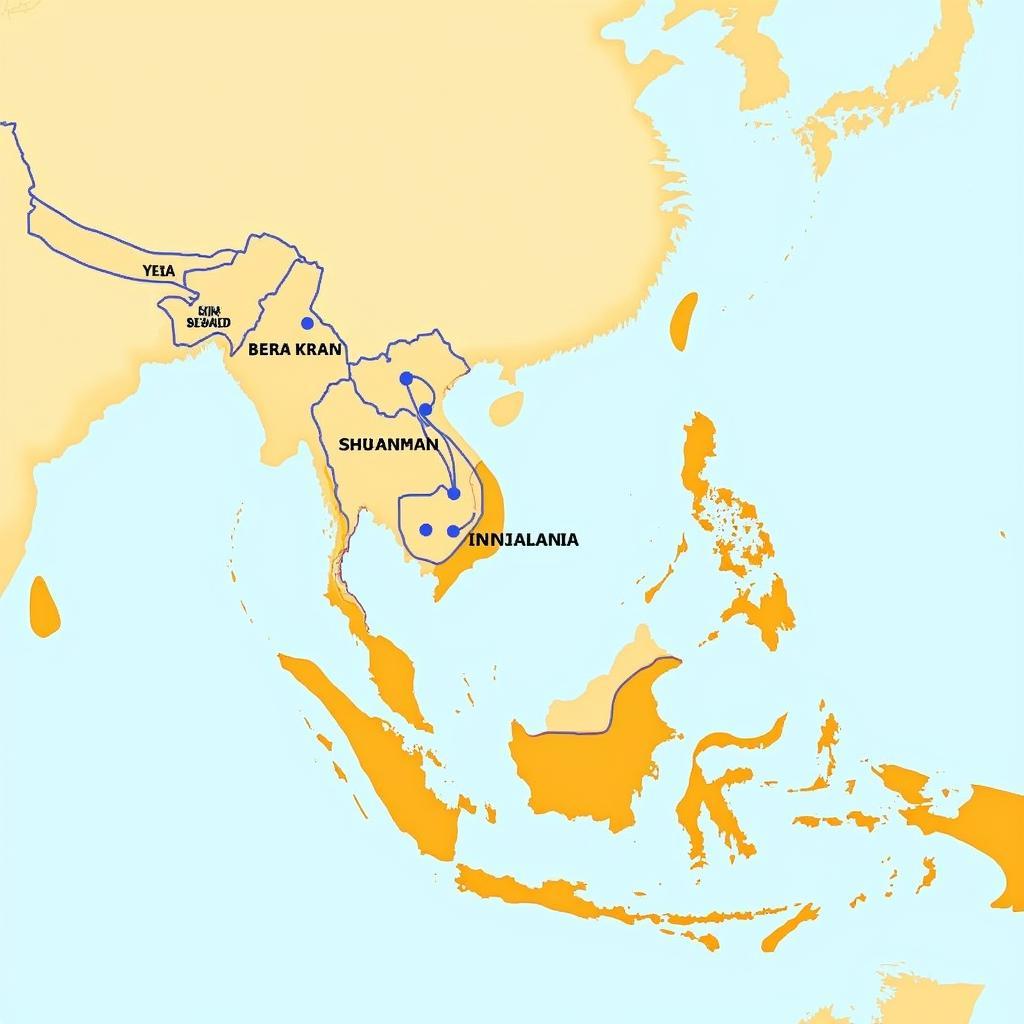The Asean, or the Association of Southeast Asian Nations, is a dynamic intergovernmental organization that plays a crucial role in the political, economic, and socio-cultural landscape of Southeast Asia. Established on August 8, 1967, with the signing of the Bangkok Declaration, the ASEAN has grown to encompass ten member states, fostering cooperation and integration among its diverse nations.
What exactly is the ASEAN, and why is it important? This article delves into the intricacies of this vital organization, exploring its history, objectives, achievements, and future prospects. We will examine how the ASEAN promotes regional stability and economic growth, facilitates cultural exchange, and addresses critical challenges facing the region. Understanding the ASEAN is key to grasping the complex dynamics of Southeast Asia and its increasing global significance. For instance, the ASEA legal services plan is a testament to the commitment of enhancing cooperation within the region.
The Foundation and Objectives of the ASEAN
The ASEAN was founded on the principles of mutual respect, non-interference, and peaceful conflict resolution. Its primary objectives include accelerating economic growth, social progress, and cultural development, promoting regional peace and stability, and providing a framework for member states to address common challenges.
- Economic Cooperation: The ASEAN Economic Community (AEC) aims to create a single market and production base, facilitating the free flow of goods, services, investments, and skilled labor.
- Political-Security Cooperation: The ASEAN Political-Security Community (APSC) focuses on promoting political stability, enhancing cooperation in combating transnational crime, and developing conflict resolution mechanisms.
- Socio-Cultural Community: The ASEAN Socio-Cultural Community (ASCC) promotes social development, environmental protection, and cultural exchange among member states.
The ASEAN’s Achievements and Challenges
The ASEAN has achieved significant milestones in promoting regional cooperation and integration. The establishment of the AEC has spurred economic growth and facilitated trade liberalization. The APSC has contributed to maintaining peace and stability in the region. The ASCC has fostered greater understanding and cooperation among the diverse cultures of Southeast Asia. However, the ASEAN also faces significant challenges. These include addressing economic disparities among member states, managing territorial disputes, combating transnational crime, and responding to emerging global challenges such as climate change and pandemics. Take the ASE color swatch, for example, it showcases the vibrancy and diversity of the region, a strength that also presents challenges in harmonizing policies and approaches.
Navigating Complex Regional Dynamics: How does the ASEAN address territorial disputes?
The ASEAN has played a crucial role in mediating territorial disputes among member states, promoting dialogue and peaceful conflict resolution. The organization emphasizes the importance of adherence to international law and the principles of the United Nations Convention on the Law of the Sea (UNCLOS).
The Future of the ASEAN
The ASEAN continues to evolve and adapt to the changing regional and global landscape. The organization is focused on strengthening its institutional capacity, deepening integration, and enhancing its engagement with external partners. The ASEAN is also exploring new areas of cooperation, such as digital economy, sustainable development, and disaster management. “The ASEAN’s ability to adapt to evolving global dynamics is critical to its continued success,” says Dr. Anya Sharma, a prominent Southeast Asian political analyst. This adaptability is evident in initiatives like My ASE.com, which provides a platform for businesses and individuals to connect and collaborate within the ASEAN region.
What is the ASEAN’s role in the global arena?
The ASEAN is increasingly playing a prominent role in the global arena, engaging with major powers and international organizations on a wide range of issues. The organization serves as a platform for promoting regional interests and perspectives on global challenges. “The ASEAN’s collective voice is becoming increasingly influential in shaping the global agenda,” adds Dr. Sharma. This growing influence can be observed in various areas, including trade negotiations and climate change discussions. Furthermore, initiatives like ASE 411 142 01 000 contribute to building a stronger and more integrated ASEAN identity.
Conclusion
The ASEAN represents a remarkable story of regional cooperation and integration. While challenges remain, the ASEAN’s commitment to its founding principles and its proactive approach to addressing emerging issues position it for continued success. The ASEAN remains a vital force for peace, stability, and prosperity in Southeast Asia, playing an increasingly important role in the global community. Initiatives like the ASE identity column showcase the unique identity and collective spirit of the ASEAN community.
FAQ
- What are the member states of the ASEAN?
- When was the ASEAN established?
- What are the main objectives of the ASEAN?
- What is the ASEAN Economic Community (AEC)?
- How does the ASEAN address territorial disputes?
- What is the ASEAN’s role in the global arena?
- What are the future prospects of the ASEAN?
When you need assistance, please contact Phone Number: 0369020373, Email: aseanmediadirectory@gmail.com Or visit our address: Ngoc Lien Village, Hiep Hoa, Bac Giang, Vietnam. We have a 24/7 customer service team.

